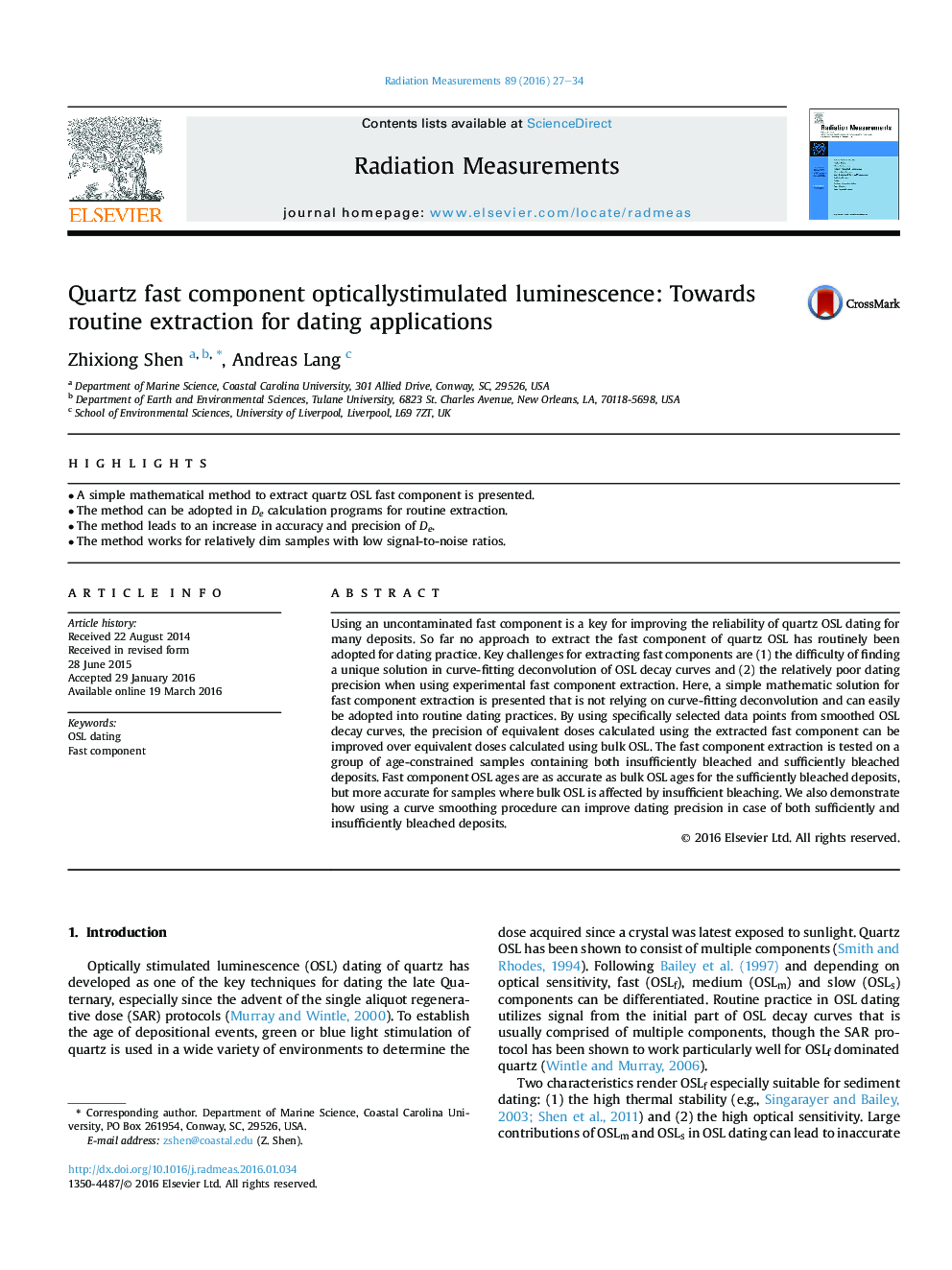| Article ID | Journal | Published Year | Pages | File Type |
|---|---|---|---|---|
| 1884395 | Radiation Measurements | 2016 | 8 Pages |
•A simple mathematical method to extract quartz OSL fast component is presented.•The method can be adopted in De calculation programs for routine extraction.•The method leads to an increase in accuracy and precision of De.•The method works for relatively dim samples with low signal-to-noise ratios.
Using an uncontaminated fast component is a key for improving the reliability of quartz OSL dating for many deposits. So far no approach to extract the fast component of quartz OSL has routinely been adopted for dating practice. Key challenges for extracting fast components are (1) the difficulty of finding a unique solution in curve-fitting deconvolution of OSL decay curves and (2) the relatively poor dating precision when using experimental fast component extraction. Here, a simple mathematic solution for fast component extraction is presented that is not relying on curve-fitting deconvolution and can easily be adopted into routine dating practices. By using specifically selected data points from smoothed OSL decay curves, the precision of equivalent doses calculated using the extracted fast component can be improved over equivalent doses calculated using bulk OSL. The fast component extraction is tested on a group of age-constrained samples containing both insufficiently bleached and sufficiently bleached deposits. Fast component OSL ages are as accurate as bulk OSL ages for the sufficiently bleached deposits, but more accurate for samples where bulk OSL is affected by insufficient bleaching. We also demonstrate how using a curve smoothing procedure can improve dating precision in case of both sufficiently and insufficiently bleached deposits.
